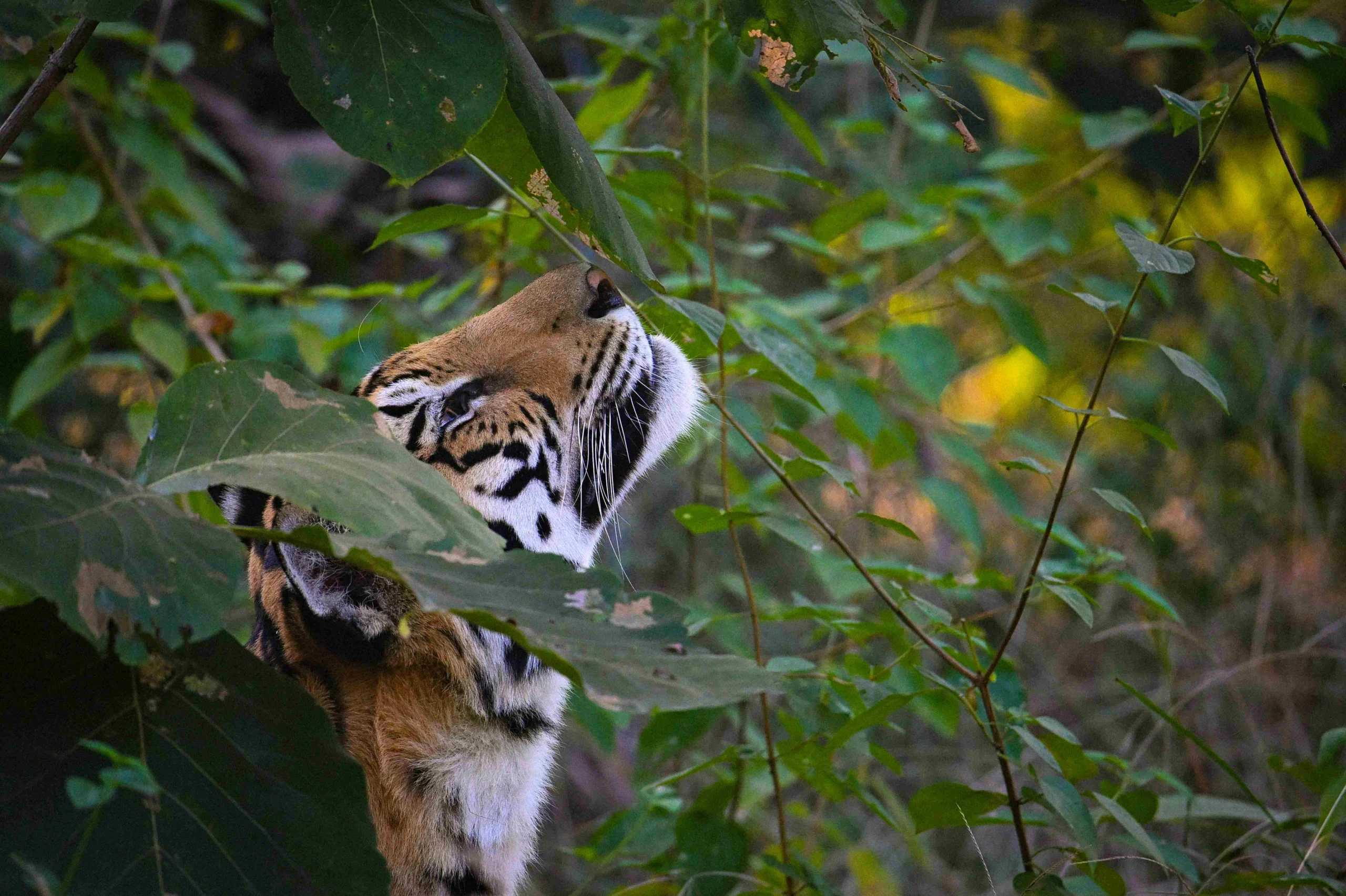An exhaustive guide on where to spot the majestic Bengal tiger
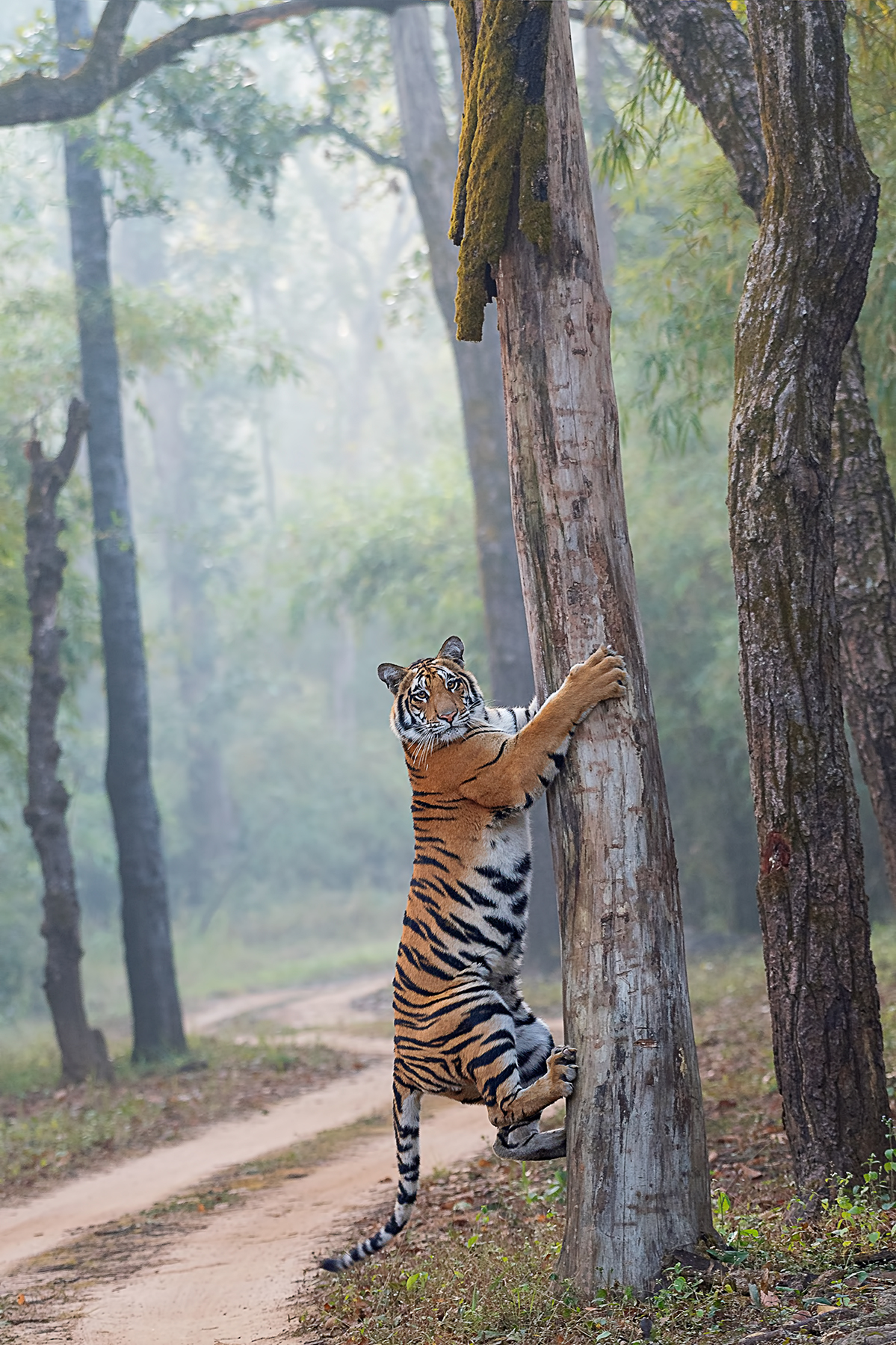
Confused where to head next for an adventure? Why not opt for a Tiger Safari in India. Safari adventures are the new thing in town and we want to make sure you’re always on your toes. Pugdundee Safaris brings you a complete guide on best national parks for tiger sightings in India. Below is a list of one of the best tiger safaris in India, which will not only help you pick the best tiger reserve in India but will also help you expand your knowledge.
BEST NATIONAL PARKS FOR TIGER SIGHTINGS IN INDIA ARE:
- Bandhavgarh National Park
- Kanha National Park
- Pench National Park
- Satpura National Park
- Panna National Park
- Ranthambore National Park
- Pilibhit Tiger Reserve
- Tadoba-Andhari Tiger Reserve
Not just for its monuments, India is also known for its huge tiger population. Home to around 3682 tigers, India has the highest population of tigers in the entire world. Here’s all that you need to know about the best national parks for tiger sightings in India.
1. BANDHAVGARH NATIONAL PARK: A TOP TIER TIGER SAFARI DESTINATION
Situated in Umaria district of Madhya Pradesh, this haven for tiger lovers is the most sough out place for a tiger safari in India. Also famously known as the land of origin of white tigers, Bandhavgarh National Park is a must visit for all the safari lovers. Not only for its tigers, the national park is also famous for its tall Sal trees, which act as a blanket around the forest. Along with Sal, the forest also has a thick Bamboo patches.

HISTORY
With its mention in Hindu religious texts like Ramayana, Bandhavgarh shares a unique history with the tigers. It is said that the land has been inhabited by tigers since time immemorial. The place which was earlier used as a hunting ground by the royal family is now one of the best national park for tiger sighting. The name Bandhavgarh can be broken down into Bandhav and Garh. The word Bandhav means Brother & the word Garh means Fort, hence, literally translating to Brother’s fort.
According to Ramayana, the fort was gifted by Lord Rama to his younger brother Lakshmana to keep an eye on Lanka, making him the protector of Bandhavgarh. Till date the locals worship Lord Lakshmana as their protector.Various caves and temples within the fort premises, reflects the history of the park. The Bandhavgarh fort, unnamed caves and local temples all make the safari much more interesting. Read more about Bandhavgarh and its history in our other blogs.
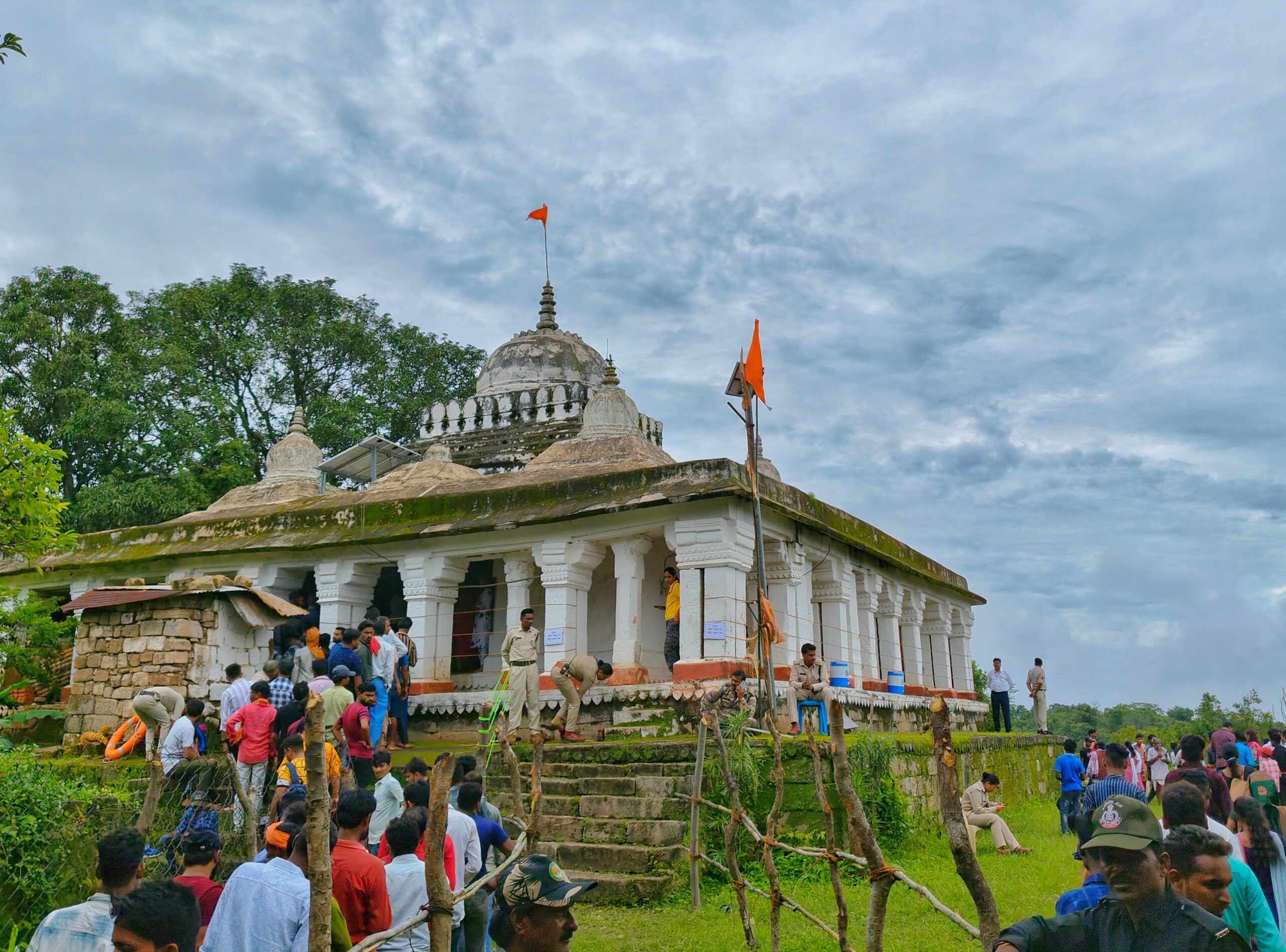
Temple situated on Bandhavgarh hilltop
ZONES OF BANDHAVGARH NATIONAL PARK
The National Park is divided into core & buffer zones.
The core zones are:
- Tala
- Khitauli
- Magdhi
The buffer zones are:
- Dhamokar
- Johila
- Panpatha
REASONS WHY BANDHAVGARH NATIONAL PARK IS A MUST VISIT
- Robust tiger population.
- Land of origin of white tigers.
- Ample amount of deer population.
- Proximity to major airports & train stations.
- Forts, temples and other historic sites to visit.
2. KANHA NATIONAL PARK: ICONIC TIGER SAFARI DESTINATION
Another beautiful national park, another gem of Madhya Pradesh known for its scenic beauty, is Kanha National Park. This spectacular landscape is situated in Mandla district of the state. Surrounded by the Maikal ranges of Satpura, this tiger reserve is considered as one of the finest wildlife areas in the world. Not just for its beauty, it is the only park in the state which is home to hard-ground Swamp Deer or Barasingha. The story of how the park revived its population of the swamp deer is a still a success and is taught in major wildlife courses.
Originally inhabited by the Gond dynasty, the land of Kanha was originally a part of Gondwana land. The national park has many scenic landscapes. Animals like tiger, leopards, sloth bears, gaurs and jackals are some of the focus species of the park.

ZONES OF KANHA NATIONAL PARK
The National Park is divided into core & buffer zones.
The core zones are:
• Kanha
• Sarhi
• Mukki
• Kisli
The buffer zones are:
• Khatiya
• Khapa
• Sijhora
REASONS WHY KANHA NATIONAL PARK IS A MUST VISIT
- Experience the unique beauty of the most beautiful park of Madhya Pradesh.
- Watch the spectacular swamp deer or Barasingha.
- Spot the tigers, leopards, sloth bears and gaurs in action.
3. PENCH NATIONAL PARK: A FAMOUS TIGER SAFARI DESTINATION
Situated in Seoni district of Madhya Pradesh, this national park is known for its leopard sightings. Said to be the inspiration behind ‘The Jungle Book’, written by Sir Rudyard Kipling, this jungle still makes safari lovers go in awe of its serenity. You can still find local book shops selling writings by Sir Rudyard Kipling. Just what Ruskin Bond is for mountains, writings by Sir Kipling still serve as an anecdote for Pench National Park.
Spread across an area of 1200 sq. km, the national park straddles between the states of Madhya Pradesh and Maharashtra. Apart from just the tigers, Pench is more famous for its Leopard sightings including black Leopards. It would be no surprise if you spot a leopard somewhere lurking over the branches. And if you visit the jungle in prime safari season, you can also spot leopard cubs with their mothers.
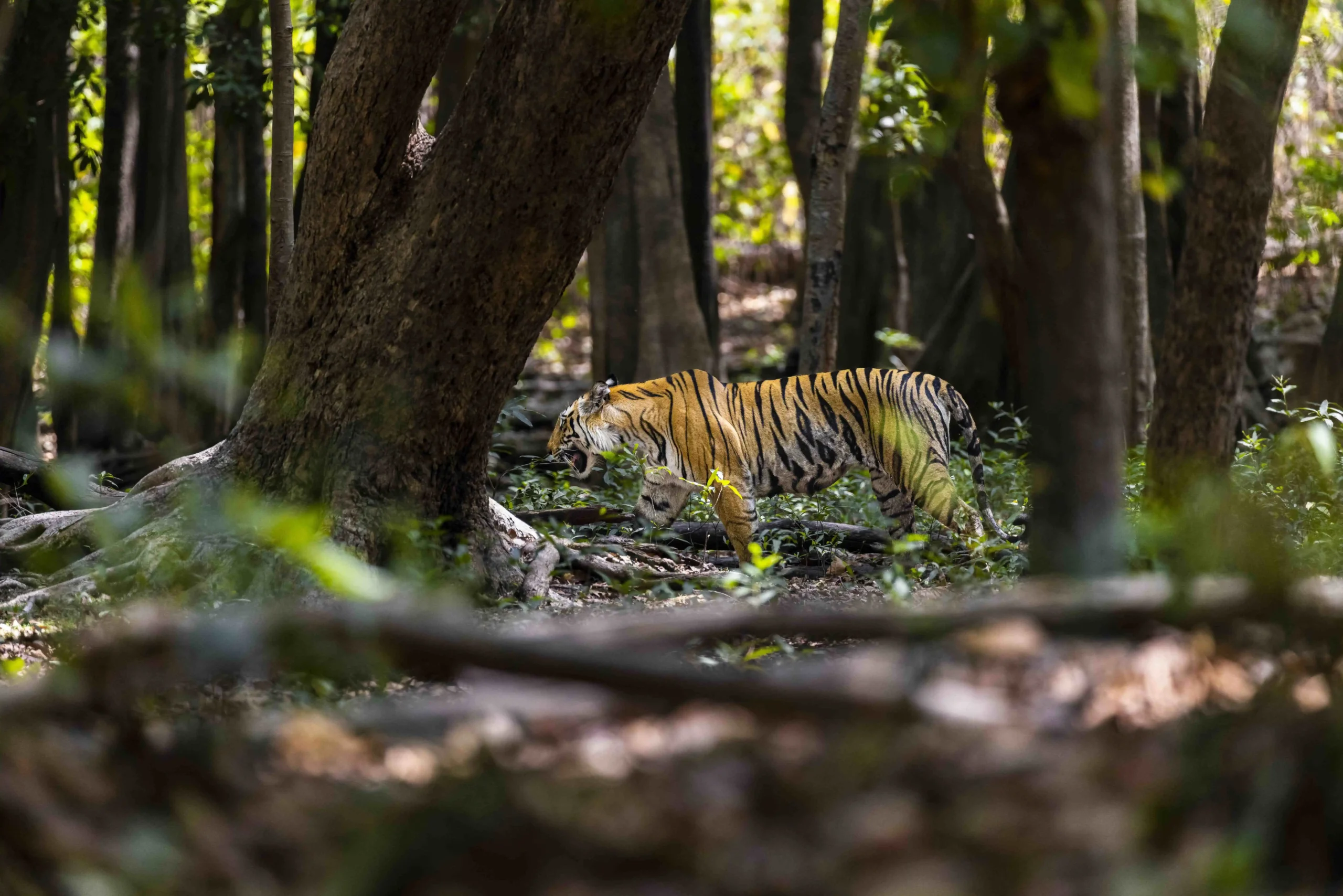
ZONES OF PENCH NATIONAL PARK
The National Park is divided into core and buffer zones:
The core zones are:
- Turia
- Karmajhiri
- Jamtara
The buffer zones are:
- Khawasa
- Khumbhpani
- Masurnala
- Rukhad
- Teliya
REASONS WHY PENCH NATIONAL PARK IS A MUST VISIT
- For one of the best leopard safaris in India.
- Relive the jungle days and watch the magic of Mowgli become alive.
- Spot Leopards, Tigers, Wild Dogs and Jackals.
- Visit the vibrant local villages.
Among the best national parks for tiger sighting in India, Satpura is another highly recommended national park with the best jungle safari in India. This is another national park which should be on your bucket list. Satpura National Park is one the most diverse national parks in Madhya Pradesh.
4. SATPURA NATIONAL PARK: AN OFFBEAT TIGER SAFARI DESTINATION
It is in true sense a holistic national park. Surrounded by Satpura ranges, this land hold many riches. The forest has it all, the lush greenery, freely flowing rivers, the backwaters, the hill stations and the most precious gems of the jungle, its animals. Situated in Narmadapuram district of Madhya Pradesh, Satpura is the first reserve forest of India.

The park derived its name from the surrounding Satpura mountain ranges. The word Satpura can be broken down into Sat & Pura. Where the word sat means seven and pura means mountains. Hence, the word Satpura came to origin.
Not only for the safaris, the national park also has hill stations like Pachmarhi & Patalkot valley. These serve as a one-day getaway for the tourists, since it is not too far from the park. The world famous Bhimbetka caves are also situated inside the national park. This is a world heritage site which attracts tourists from across the world.
ZONES OF SATPURA NATIONAL PARK
Satpura National Park is divided into core and buffer zones:
The core zones are:
- Churna
- Madhai
- Mallupura
- Pachmarhi
The buffer zones are:
- Pipariya
- Jamani Dev
- Parsapani
- Tamia Delakhari
REASONS WHY SATPURA NATIONAL PARK IS A MUST VISIT
- Visit to hill stations like Pachmarhi & Patalkot valley.
- Canoe Ride in Denwa River.
- Night Safari at Sehra and Parsapani zones.
- Visit to Bhimbetka caves, a world heritage site.
- Watch sloth bears in action.
5. PANNA NATIONAL PARK: A NATIONAL PARK WITH A DIFFERENT TAKE
Another national park of importance is Panna National Park. The park is slightly different from other national parks in Madhya Pradesh. The park supports closed canopy forests, open forests with short grass, and undercover, open Savannah woodlands which reflect sub-Saharan habitats, tall grasslands, and degraded scrub. Overall, the park has different topography in different regions.
The Ken River passing through it acts as the park’s lifeline. The river is also a home for gharials and muggers. Spread over 543 sq km, the national park was carved out of the hunting reserves of the erstwhile Panna, Chhattarpur and Bijawar states. Panna was accorded sanctuary status in 1975 and upgraded to a national park in 1981. In 1994, it became India’s 22nd Tiger Reserve.

Panna has been home to a highly successful Tiger relocation project. From near extinction the tiger population has reached a healthy figure of 70 plus. This park holds one of the best wildlife safari in India.
ZONES OF PANNA NATIONAL PARK
The national park is divided into core and buffer zones:
The core zones are:
- Akola
- Hinouta
- Madla
The buffer zones are:
- Akola
- Jinna
REASONS WHY PANNA NATIONAL PARK IS A MUST VISIT
- If you’re in for an offbeat adventure.
- Exploring nature but with peace and tranquility.
- Close to Khajuraho temples, a world heritage site.
6. RANTHAMBORE NATIONAL PARK: A PREMIER SAFARI DESTINATION
Another gem situated in Northern India is Ranthambore National Park. The park is situated in Sawai Madhopur district of Rajasthan. Spread in an area of 1,334 km sq, the park is surrounded by Banas and Chambal rivers. It is to be noted that the park got its name after the historic Ranthambore Fort, which lies within the park. Prior to being established as a national park, the park was called Sawai Madhopur Game Sanctuary. It was declared as one of the tiger reserves in 1974.

Credits: Kunal Ingle
HISTORY
The Ranthambore fort was built in the 10th century by Chauhan rulers. It was the exclusive hunting ground for the members of the royal family. But in 1974, it was declared a tiger reserve.
ZONES OF RANTHAMBORE NATIONAL PARK
There are a total of 10 safari zones in Ranthmabore National Park with Padam Talab being cited as the region with highest tiger sightings.
REASONS WHY RANTHAMBORE NATIONAL PARK IS A MUST VISIT
- Proximity to national capital makes it a preferred destination.
- Multiple safari zones give people a lot of options and opportunities to sight tiger.
- Proximity to various train stations and airports makes it easily accessible.
- Rajasthan being a prime tourist destination, is preferred by tourists both national & international.
7. PILIBHIT TIGER RESERVE: A COMING OF AGE TIGER SAFARI
This tiger reserve is situated in Pilibhit and Shahjahanpur district of Uttar Pradesh and was notified as a tiger reserve in 2014. It is one of the few well-forested parks in Uttar Pradesh with less than a hundred tigers being borne by it. Animals which could be seen in the national park are: tigers, leopards, deer, barasingha, sloth bear, chital, langur, hyena etc.
The forest is characterized by sal trees, tall grasslands and swamps which recur due to periodic flooding from rivers. A special wildlife corridor links Pilibhit Tiger Reserve with Jim Corbett National Park, Kishanpur Wildlife Sanctuary and Dudhwa National Park.
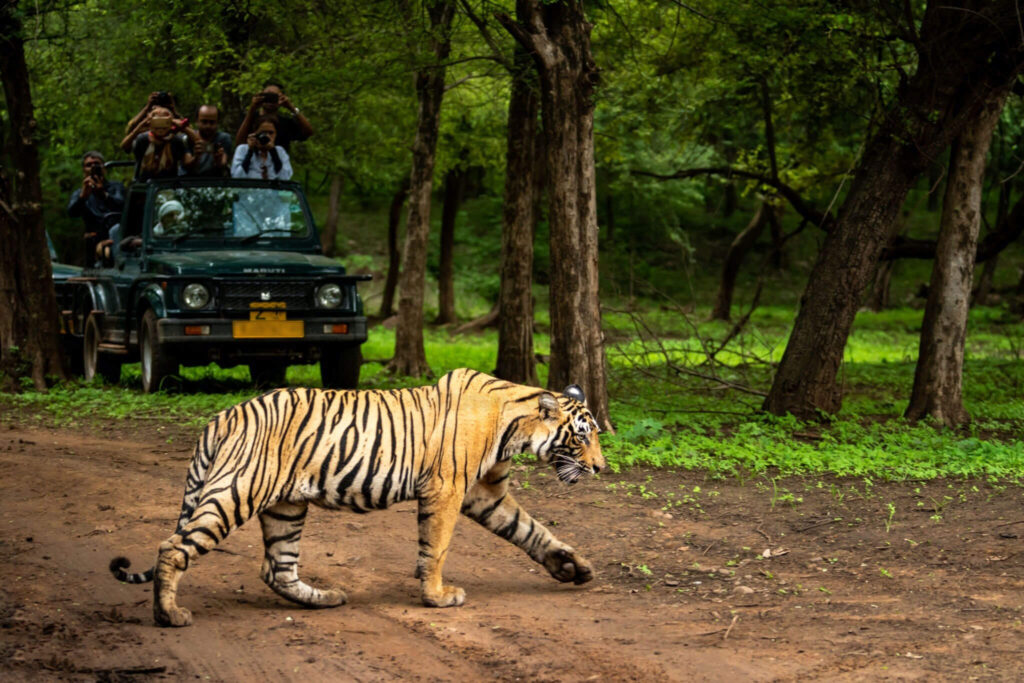
ZONES OF PILIBHIT TIGER RESERVE
The entire tiger reserve is divided into 2 zones.
REASONS WHY PILIBHIT TIGER RESERVE IS A MUST VISIT
- Proximity to national capital region makes it more accessible.
- Few national park options in Uttar Pradesh makes it more favorable.
8. TADOBA-ANDHARI TIGER RESERVE
Tadoba Andhari Tiger Reserve or Tadoba National Park is one of the most preferred tiger destinations in India and the largest national park in Maharashtra. The national park is situated in Chandrapur district of Maharashtra. The region is also referred as the Vidarbha region. Spread across an area of 1727 Sq.km, Tadoba Tiger Reserve includes Tadoba National Park and Andhari Wildlife Sanctuary. Tadoba National Park was created in the year 1955. The Andhari Wildlife Sanctuary was formed in the year 1986 and was integrated with the park in 1995 to establish the present Tadoba Andhari Tiger Reserve.
ZONES OF TADOBA NATIONAL PARK
The national park is divided 4 zones:
- Tadoba zone
- Moharli zone
- Kolara zone
- Pangdi-Zari zone
REASONS WHY TADOBA NATIONAL PARK IS A MUST VISIT
- Great connectivity from Nagpur Airport.
- Beautiful jungle with hilly terrain and undulating landscape.
- Good tiger density in the jungle allows ample opportunities for tiger sighting.
Hope this blog convinced you enough for safari as your next adventure destination. But if you still have any doubts, please feel free to contact any of our safari expert. Remember we’re just a call away
Written by Richa Dhiryan

